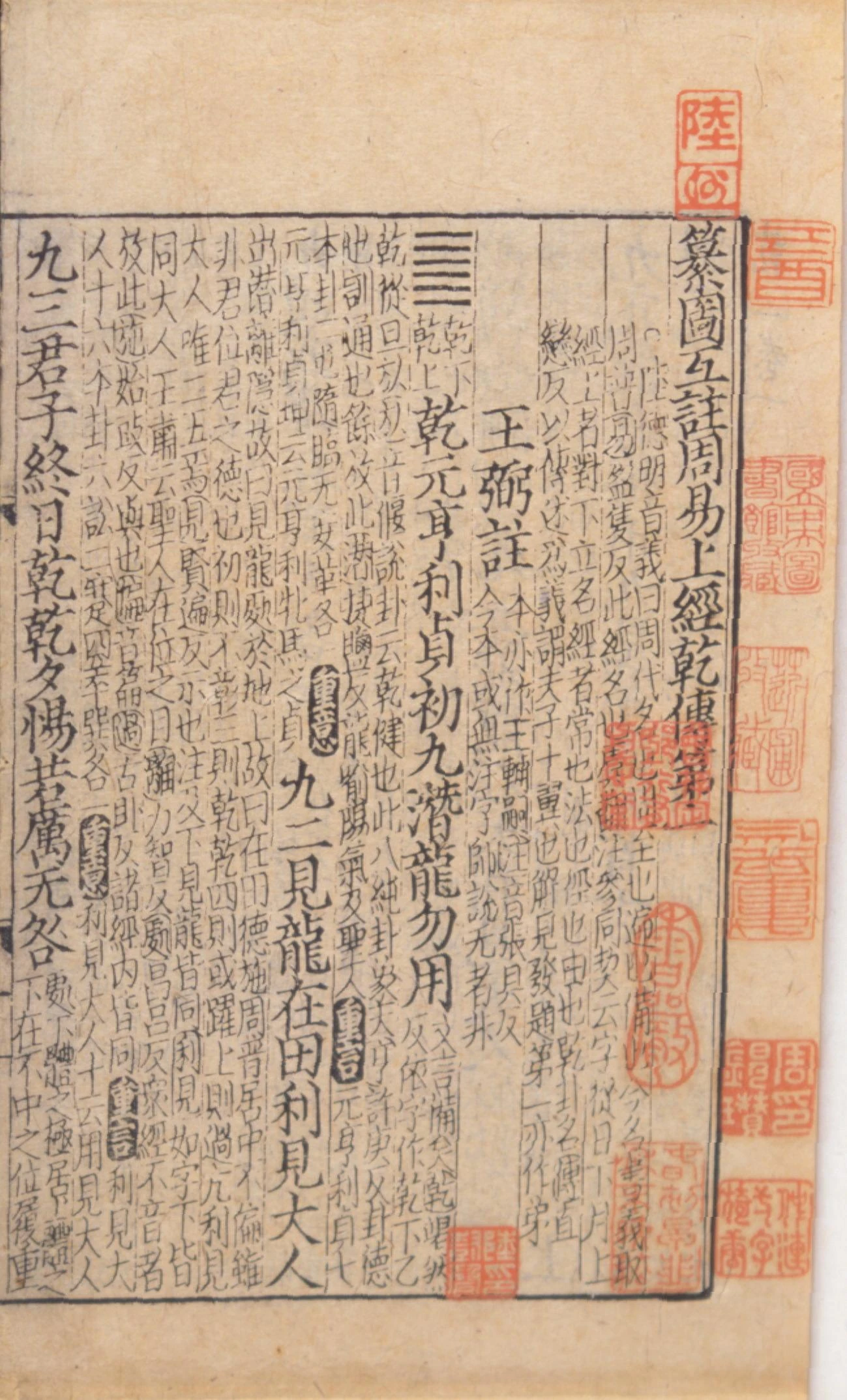
Introduction: Unlocking Ancient Wisdom for a Modern World
The I Ching, or Book of Changes, is one of the oldest texts in human history, dating back over 3,000 years. This ancient Chinese oracle, rooted in Taoist and Confucian philosophy, offers profound insights into life’s complexities through its 64 hexagrams. Each hexagram, formed by six lines, represents a unique situation or state of change. But what does the I Ching reveal about our tech-driven world? Surprisingly, its timeless wisdom aligns with modern challenges, from artificial intelligence to personal decision-making. By exploring its principles, we can uncover guidance for navigating technology’s rapid evolution and its impact on our lives.
The I Ching: A Guide to Understanding Change
The I Ching is more than a fortune-telling tool; it’s a framework for understanding life’s constant flux. At its core, it teaches that change is inevitable, and balance is key. The hexagrams, built from combinations of broken (yin) and unbroken (yang) lines, symbolize the dynamic interplay of opposites. For example, Hexagram 1, Ch’ien (The Creative), emphasizes initiative and strength, while Hexagram 2, K’un (The Receptive), highlights adaptability and openness.
In a tech context, this duality mirrors the balance between innovation and stability. Consider artificial intelligence: developers push boundaries with cutting-edge algorithms, yet they must also ensure systems remain ethical and reliable. The I Ching suggests that embracing both action and restraint leads to harmony. For instance, when creating AI, engineers might ask, “How do we innovate without losing control?” The I Ching encourages thoughtful progress, urging us to align ambition with responsibility.
Applying I Ching Principles to Technology
Balancing Innovation with Ethics
The I Ching emphasizes equilibrium, a concept critical in technology. Take Hexagram 11, T’ai (Peace), which describes a state of harmony when heaven and earth align. In tech, this translates to balancing innovation with ethical considerations. For example, facial recognition systems offer convenience but raise privacy concerns. The I Ching advises moderation, suggesting that developers prioritize user trust alongside functionality. By doing so, they create solutions that benefit society without causing harm.
Moreover, the I Ching encourages foresight. Hexagram 16, Yu (Enthusiasm), warns against unchecked zeal. In tech, this might apply to overhyped trends like the metaverse. While exciting, such innovations require careful planning to avoid wasted resources or societal backlash. The I Ching reminds us to temper enthusiasm with practicality, ensuring sustainable progress.
Decision-Making in a Complex World
The I Ching is often consulted for guidance in uncertain times, much like today’s tech landscape. Hexagram 23, Po (Splitting Apart), advises caution during instability, urging us to shed outdated practices. For tech leaders, this might mean abandoning legacy systems that hinder innovation. Conversely, Hexagram 24, Fu (Return), signals renewal, encouraging the adoption of new tools like cloud computing or quantum technology.
For individuals, the I Ching offers clarity in navigating tech’s impact. Should you invest in a new gadget? Switch to a different platform? Hexagram 44, Kou (Coming to Meet), warns against impulsive decisions, suggesting careful evaluation. By reflecting on the I Ching’s advice, we can make informed choices in a world flooded with options.
The I Ching and Personal Growth in a Digital Age
Beyond technology, the I Ching reveals insights about personal development. Hexagram 4, Meng (Youthful Folly), encourages learning through experience, a lesson apt for our digital age. With information overload, we often feel overwhelmed by data. The I Ching suggests approaching new tools—like generative AI or blockchain—with curiosity but also humility. Instead of blindly adopting trends, we should learn their strengths and limitations.
Additionally, the I Ching promotes mindfulness. Hexagram 52, Ken (Keeping Still), advocates pausing to reflect. In a world of constant notifications, this principle is vital. For example, taking a digital detox aligns with Ken’s call for stillness, helping us regain focus and reduce stress. By applying such wisdom, we can use technology as a tool for growth rather than a source of distraction.
Technology as a Reflection of Yin and Yang
The I Ching’s core concept of yin and yang—complementary forces—resonates deeply with technology. Hardware and software, for instance, embody this duality. Hardware provides the physical foundation (yang), while software offers flexibility and creativity (yin). Neither can function without the other, just as yin and yang are interdependent.
This perspective also applies to human-machine collaboration. AI systems, like chatbots or recommendation algorithms, rely on human input to function effectively. Hexagram 13, T’ung Jen (Fellowship), highlights the power of collective effort. In tech, this might mean diverse teams working together to build inclusive algorithms. By embracing the I Ching’s teachings, we can foster synergy between humans and machines, creating technology that uplifts rather than divides.
Challenges of Applying Ancient Wisdom to Modern Problems
While the I Ching offers timeless guidance, applying it to technology isn’t without challenges. Its language, rooted in ancient metaphors, can feel abstract. For example, interpreting Hexagram 38, K’uei (Opposition), in the context of cybersecurity requires creative thinking. The hexagram suggests resolving conflict through understanding, which might translate to fostering dialogue between tech companies and regulators to address data breaches.
Furthermore, the I Ching’s emphasis on introspection may clash with the fast-paced tech industry. Developers under tight deadlines might struggle to pause and reflect, as Hexagram 52 advises. Yet, this tension highlights the I Ching’s value: it pushes us to slow down and consider long-term consequences, such as the environmental impact of data centers or the societal effects of automation.
The I Ching in Action: Real-World Examples
To illustrate, let’s consider how the I Ching might guide a tech startup. Imagine a company developing an AI-powered healthcare app. Hexagram 15, Ch’ien (Modesty), advises humility in success. The startup might prioritize user feedback over flashy marketing, ensuring the app meets real needs. Similarly, Hexagram 36, *Ming Iസ
System: I* (Darkening), suggests protecting one’s inner light during adversity. In this case, the startup could safeguard patient data privacy despite external pressures to monetize it.
Another example is a tech giant like Google or Amazon. Hexagram 43, Kuai (Breakthrough), encourages decisive action to overcome obstacles. For such companies, this might mean boldly investing in renewable energy to power data centers, aligning with the I Ching’s call for principled action.
The Future of the I Ching in a Tech-Driven World
As technology advances, the I Ching remains relevant. Its focus on balance, adaptability, and reflection offers a counterpoint to the relentless pace of innovation. For instance, Hexagram 64, Wei Chi (Before Completion), speaks to transitions and unfinished tasks. In tech, this could apply to the iterative nature of software development, where products are never truly “complete” but constantly evolving. The I Ching encourages patience and persistence, qualities essential for long-term success in tech.
Moreover, as AI and automation reshape society, the I Ching’s emphasis on human connection remains vital. Hexagram 8, Pi (Holding Together), stresses unity. This principle could inspire tech leaders to prioritize inclusivity, ensuring AI systems serve diverse populations rather than reinforcing biases.
In Closing: A Timeless Guide for a Modern Era
To sum up, the I Ching reveals profound insights for navigating technology and life. Its teachings on balance, foresight, and mindfulness offer a roadmap for ethical innovation and personal growth. By applying its wisdom, we can harness technology’s potential while staying grounded in human values. As we move forward, the I Ching reminds us that change is constant, but thoughtful action can shape a brighter future. The real question is: how will we use this ancient wisdom to guide our tech-driven world? Let us take the necessary steps to ensure technology serves humanity’s greater good.

Leave a Reply